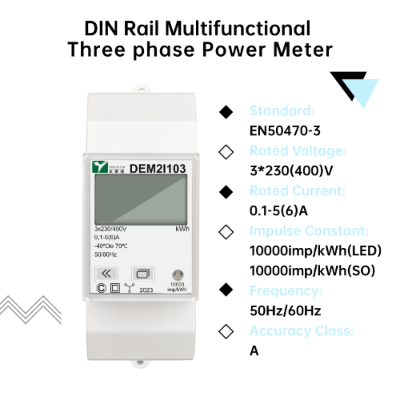A shunt power meter, also known as a shunt resistor, is a device used to measure the current flowing through an electrical circuit. It is primarily used in high-voltage and high-current applications, where traditional measurement techniques would be impractical or unsafe.
The shunt power meter works by measuring the voltage drop across a shunt resistor, which has a very low resistance value. The resistance of the shunt resistor is carefully calculated to ensure that it is small enough to minimize the voltage drop across it, while still being large enough to safely handle the current being measured.
The shunt power meter is typically connected in series with the circuit being measured, and the voltage drop across the shunt resistor is measured using a voltmeter. Using Ohm's Law (V = IR), the current flowing through the circuit can be calculated based on the voltage drop across the shunt resistor.
One advantage of a shunt power meter is that it can measure both AC and DC currents. However, it is important to note that different shunt resistors may need to be used for AC and DC measurements because the resistance value required might differ.
Another advantage of a shunt power meter is that it can handle large currents without sustaining any damage. Because the shunt resistor is specifically designed to handle high currents, it can be used in applications where traditional measurement techniques would be unsafe or impractical.
However, there are also some limitations to the shunt power meter. One limitation is its accuracy. While shunt power meters can provide accurate measurements under ideal conditions, factors such as temperature and the quality of the shunt resistor can affect the accuracy of the readings.
Additionally, shunt power meters can only measure current flow, not power or voltage. If a user wants to measure power or voltage, they will need to use additional instrumentation in conjunction with the shunt power meter.
Despite these limitations, the shunt power meter is still a valuable tool for measuring electricity in the field. Its ability to handle high currents and provide accurate measurements in high-voltage applications makes it an essential tool for many industries, ranging from power generation to automotive and aerospace engineering.
In conclusion, the shunt power meter is a device that measures current flow in electrical circuits by measuring the voltage drop across a shunt resistor. While it has some limitations in terms of accuracy and the ability to measure other electrical parameters, its ability to handle high currents and measure both AC and DC currents makes it a valuable tool in many industries. As technology continues to advance, the shunt power meter will undoubtedly continue to play an important role in electrical measurements and engineering.

 English
English 中文简体
中文简体

.jpg?imageView2/2/w/500/h/500/format/png/q/100)





.jpg?imageView2/2/w/500/h/500/format/png/q/100)




.jpg?imageView2/2/w/500/h/500/format/png/q/100)


